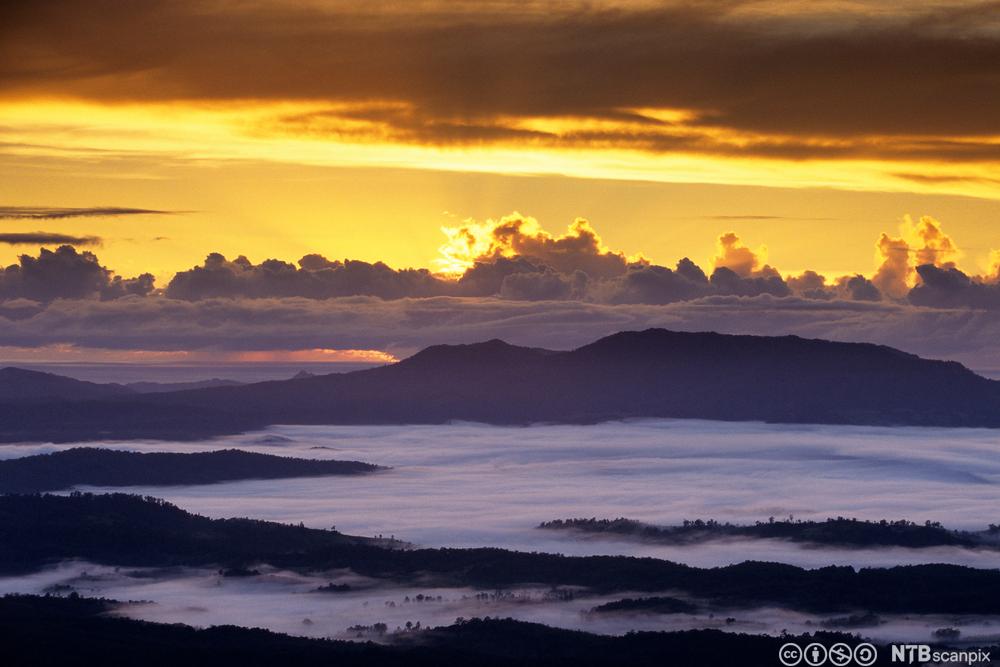The Stolen Generations of Aboriginals

Aboriginal peoples are one of two main groups of indigenous peoples in Australia. The other group is called the Torres Strait Islander peoples. Aboriginal peoples have been in Australia for at least 45,000 – 50,000 years. According to Encyclopedia Britannica, they were some of the first people to migrate out of Africa around 70,000 years ago.
By the arrival of the First Fleet of British ships to Australia in 1788 (26th Jan. 1788: Australia Day, link to the website history.com, the aboriginal peoples had occupied and successfully adapted to the many different areas of this large continent. It is difficult to find an exact number of the aboriginal population, as estimates vary from 300,000 to more than 800,000 people.
The hundreds of groups or communities of people that we call “Aboriginal peoples” were in many ways different from each other. A good example of this is that more than 200 different Aboriginal languages were spoken and hundreds of dialects! They were geographically spread throughout the entire continent and had no shared group identity. This however all dramatically changed with the British colonization of Australia.
The removal of Aboriginal children started during the early decades of colonization and intensified throughout the early and mid-20th century. There were many different policies in different historical periods and geographical areas, but they all resulted in children being removed or stolen from their families and placed in institutions or Anglo-Australian families, in the name of “integration”. Many claimed to be “saving” these children from a life of suffering; neglect, poverty and/or abuse. However, history shows that these very actions inflicted great pain and suffering on entire generations of people.
“Our task is to take them from their primitive world and teach them right from wrong”. The “Chief Protector of Aborigines” A.O. Neville, says this in the movie Rabbit-Proof Fence (Trailer to Rabbit-Proof Fence, link to NDLA resource. ). It tells the story of three Aboriginal girls who are taken from their families in 1931 and sent to a settlement camp hundreds of miles away. These three girls powerfully symbolize the heartbreaking fates of thousands of children of the Stolen Generations.
The exact number of children removed is unknown and numbers have been widely discussed. The national inquiry in 1997 called the “Bringing Them Home Report”, claims that “at least 100,000 children” were taken from their parents. On 13th February 2008, Australian Prime Minister, Kevin Rudd, delivered a national apology to indigenous individuals, families and communities. In this famous speech, he admits how the Australian government has caused profound grief, sorrow and loss on its fellow citizens and called it a “blemished chapter in our national history”. Watch Kevin Rudd's apology to "The Stolen Generation" on YouTube. Link to YouTube, Kevin Rudd's Apology to "The stolen Generation" .
The Australian Bureau of Statisics claims that 3,3% of Australia's population today is made up of Aboriginal and Torres Strait Islander peoples. This means around 800,000 people. (Link to The Australian Bureau of Statistics. )
There have been many efforts on behalf of both the Aboriginals and the Australian government, to heal the pain and damage that was inflicted. Today, for example, the Aboriginals have their own Land Council in every Australian state. They have been granted the rights to certain land areas, such as Uluru (Ayers Rock), which they consider holy.
However, there are still a great deal of challenges to overcome. To mark the 10th anniversary for the national apology given to the Stolen Generations (13th February 2018), the organisation Reconciliation Australia released a fact-sheet stating that “those affected by the forced removal of children – the Stolen Generations and their children and grandchildren – are 50% more likely to be charged by police, 30% less likely to be in good health, and 10% less likely to have a job.” They have the lowest family income in the country, a high rate of welfare dependence and a lower life expectancy than Australians in general. Link to Reconciliation Australia
Research
The website of the Australian Institute of Aboriginal and Torres Strait Islander Studies has a lot of great resources: Link to Australian Institute of Aboriginal and Torres Strait Islander Studies
- Discover a map that represents all the language, tribal or nation groups of the Indigenous peoples of Australia. Link to AIATSIS map of indigenous Australia
- Did you know that Aboriginal Australians have their own flag? Find out what it looks like and more about its origin in this article: Link to article about the Aboriginal flag on the AIATSIS website.
- The United Nations General Assembly has declared 2019 as the International Year of Indigenous Languages (Link to information about the International Year of Indigenous.
Read more about Australian indigenous languages Link to AIATSIS website, article about indigenous Australian Languages.
Group or class discussion
Now that you know more about the history of Aboriginal Australians, what kind of similarities can you find between their history and the history of other indigenous peoples that you have learned about?
Video and tasks
This video (5:14 min.) tells the story of one Aboriginal tribe and its connection with modern Australia: Link to NDLA resoruce: The Aboriginals - Video and Tasks